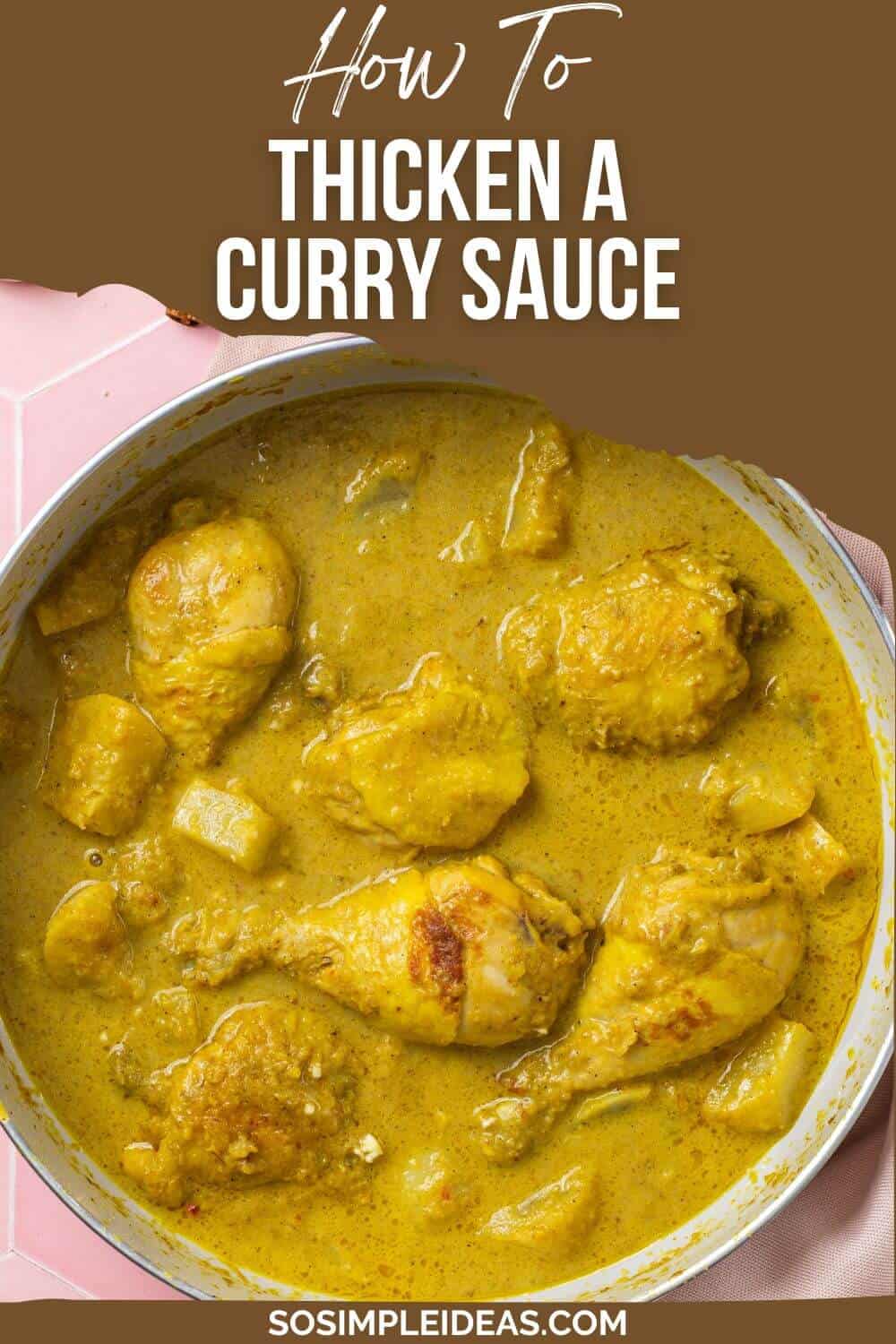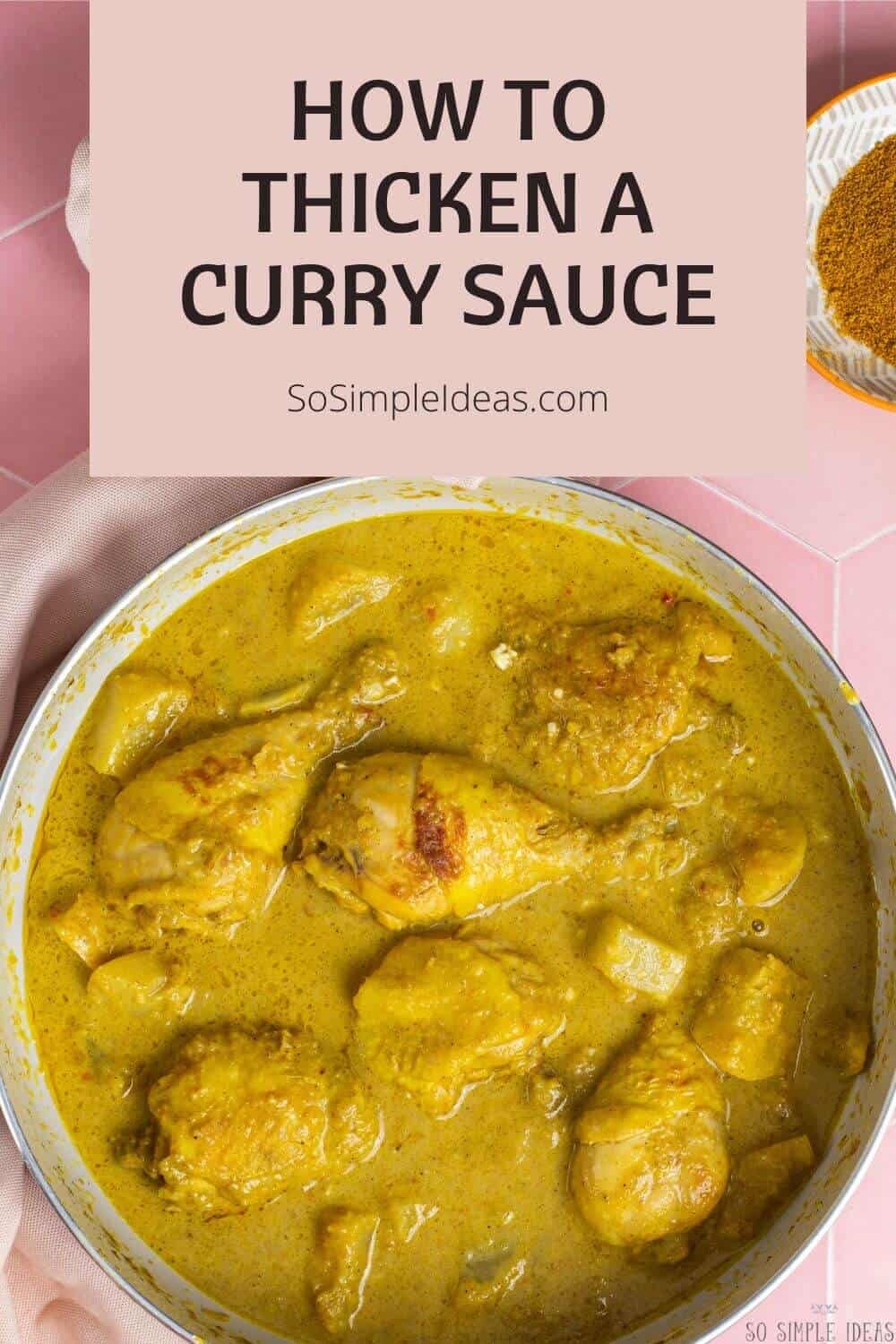A good sauce can transform a bland curry dish into something special. This is why it’s important to learn how to thicken a curry the right way.

Curry is one of the most popular cuisines in the world. For a lot of people, it’s their favorite food. When making a curry, the sauce plays a key role in the end result.
Thickening a curry sauce can be a struggle. On the one hand, you want to maintain a thick and creamy consistency to coat every bite. However, you don’t want it to be too thick or you’ll lose some of the flavor of your original dish. Don’t fret — it’s easy to learn how to thicken up a curry sauce while keeping that incredible texture and flavor.
There are many ways to thicken a curry sauce, and each has its own advantages and disadvantages. Find out more in the article below so you can choose the best method for your recipes.
Table of Contents
What is the ideal thickness for curry sauce?
Curry sauce can be thin or thick depending on the recipe and the cook’s preference. But most people agree that a curry sauce should have just the right consistency; not too runny, not too thick.
A creamy curry sauce should be thick enough to coat the ingredients in a curry dish, yet fluid enough to spill over the rice as a delicious sauce.
How to thicken curry sauce? Before answering this, you need to keep in mind that the ideal thickness of curry sauce will depend on the type of curry and the ingredients used.
If you are making a mild Indian-style curry, then a thin sauce is best because it will not overpower the delicate flavors. If you’re cooking a more spicy and flavorful Thai curry dish, however, then a thicker sauce with lots of spices will work best.
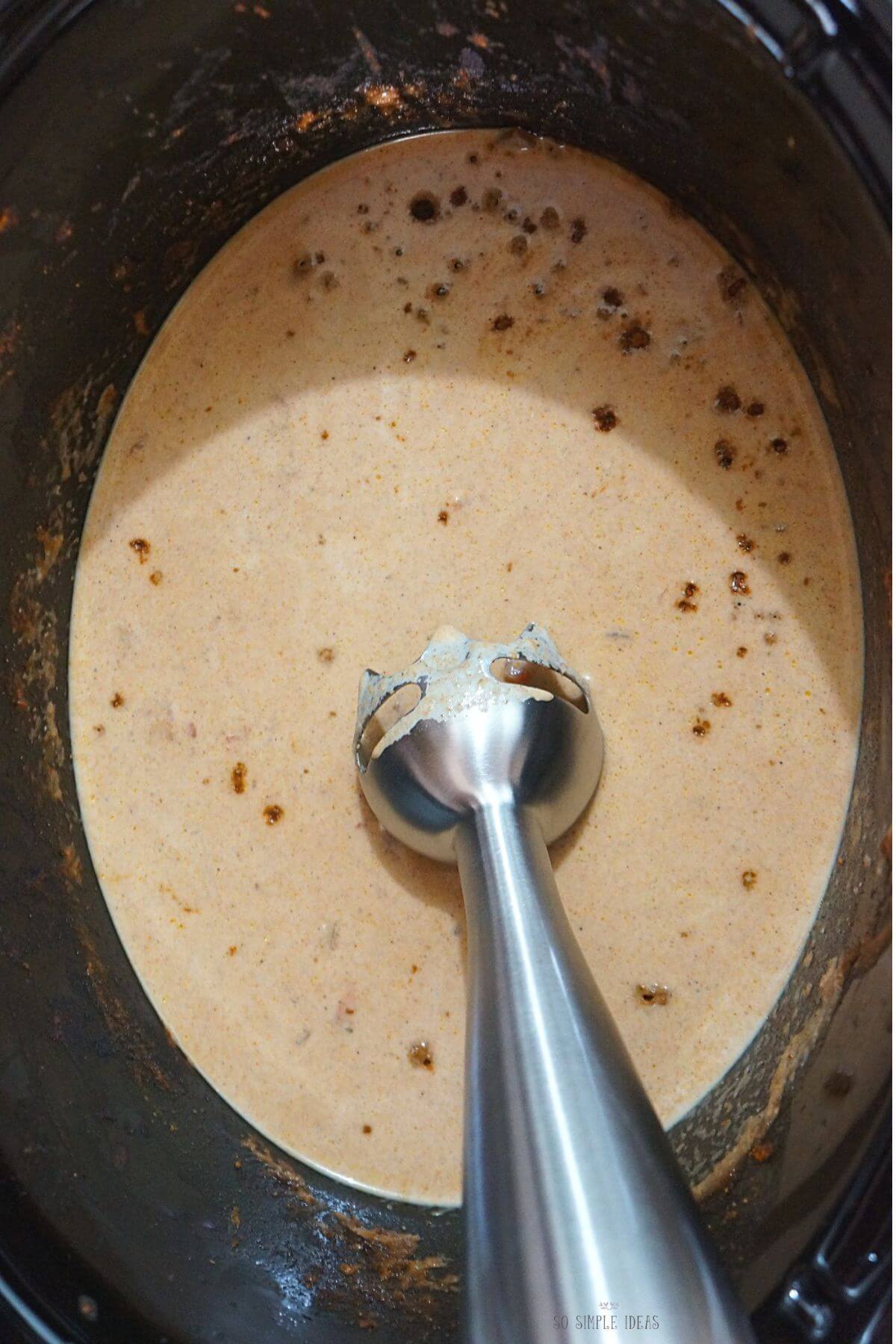
How to thicken curry sauce?
Curry is a spicy, aromatic and flavorful gravy-based dish enjoyed all over the world. Although there are many ways to prepare a curry, achieving the perfect curry sauce is what all cooking enthusiasts strive for.
Not all curries are the same in taste and consistency. To get the most out of your curry dish, you need to learn how to thicken up a curry.
Simmer your curry
Cooking a curry for longer will increase the thickness of its sauce. Because of evaporation, the watery elements of the dish turn into steam and float away, leaving behind thickened sauces with concentrated flavors.
Follow these steps on how to thicken a curry through simmering:
- Place the pot on the burner and remove the lid to let the steam escape from the pot.
- Keep the heat low so that you don’t dry out or overcook any of the ingredients, or scald the sauce at the bottom.
- Simmer the sauce for about 15 to 30 minutes, or until it reaches your desired thickness.
Thicken with flour
Regular wheat flour is a good way to thicken any sauce. You can also use arrowroot or coconut flour as alternatives to your wheat flour. Arrowroot is a traditional thickening agent that is more heat-stable, and the neutral flavor won’t compete with the taste of your curry dish.
Here’s how to make your curry thicker with flour:
- For every cup of curry liquid, mix 2 teaspoons of flour with enough water to make a paste.
- Add the mixture near the end of cooking time so that the sauce does not get overcooked and stick to the bottom of the pan.
- Stir constantly until desired thickness is acheived.
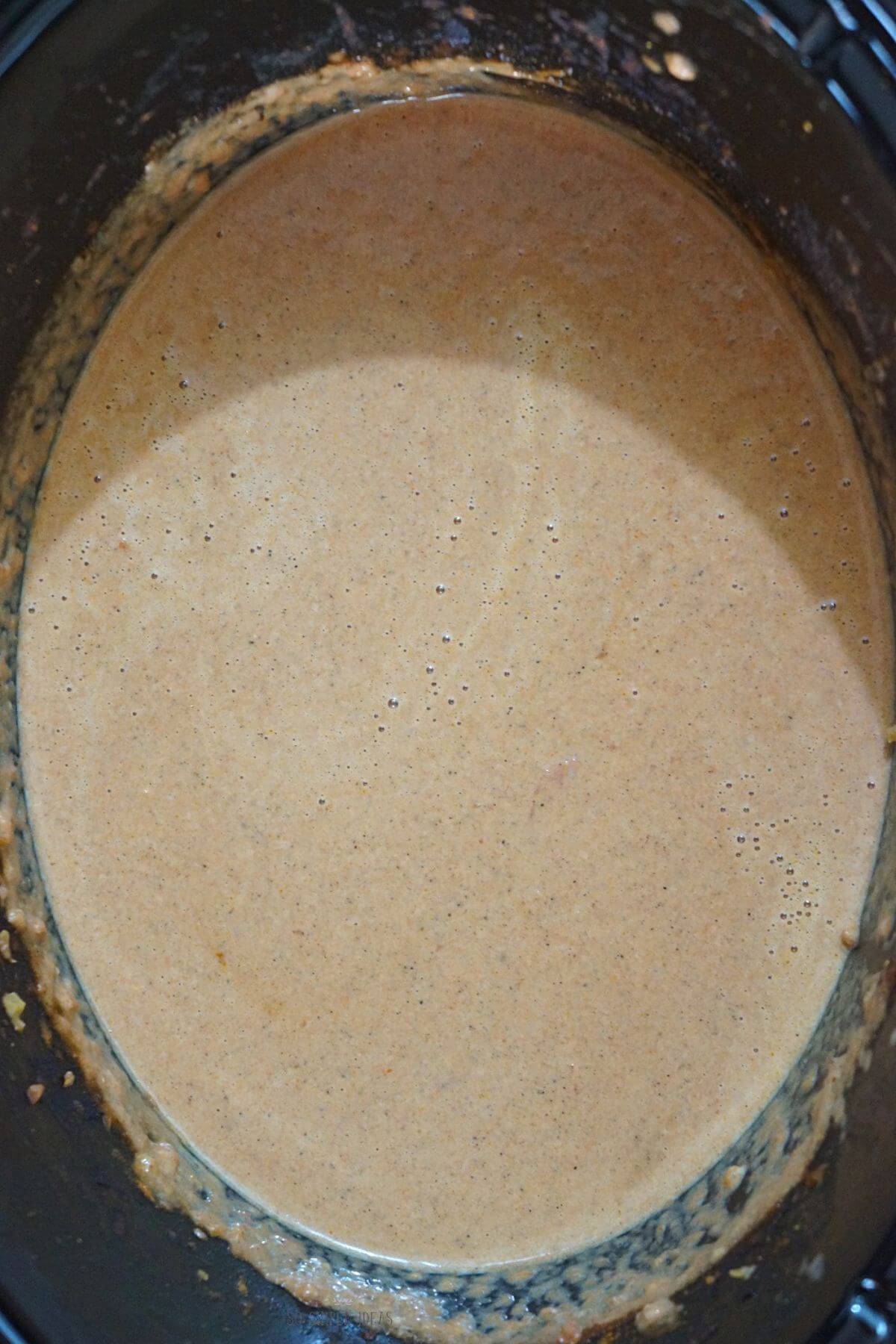
Add cornstarch
Because it is neutral in flavor, cornstarch won’t alter the taste of whatever you add it to. But to use this properly, you will need to prepare a slurry. Adding the starch directly to your curry may cause a lumpy consistency and ruin the taste of your curry dish.
Below are the steps for how to thicken curry sauce with cornstarch — the lump-free way:
- To make a slurry, combine equal parts water and cornstarch in a small bowl. Start with 2 tablespoons of each for most curry dishes (you can always add more).
- Stir the mixture until the cornstarch is dissolved.
- Slowly pour the slurry into your curry while whisking the sauce constantly. This technique will produce a thicker curry sauce, without the lumps.
Use xanthan gum to thicken the curry
Xanthan gum is an important thickening agent in gluten-free cooking. If you’re making a gluten-free curry and need to thicken it, try adding xanthan gum.
Follow the steps on how to thicken curry sauce using xanthan gum:
- To thicken curry, dissolve ¼ to ½ teaspoon xanthan gum in 1 tablespoon of water per cup of curry liquid.
- Whisk quickly until the mixture is smooth.
- Add the thickening mixture to the saucepan with your curry, and stir until it is well blended.
- Place over medium-low heat and allow to simmer.
Use yogurt
Yogurt is a wonderful addition to curry sauces. It adds a creamy tang that balances the spiciness of the curry and thickens it at the same time!
How to thicken up a curry with yogurt? Simply use the guide below:
- Add the yogurt a little at a time, stirring gently and constantly to keep it smooth.
- Keep the heat at a very low setting to avoid curdling.
Make a roux thickener
Roux is a French mixture of flour and fat which is commonly used as an effective thickening agent. A well-made roux thickens the curry and gives it a distinctive flavor.
How to thicken curry sauce with roux? Here’s how to do it:
- To make a roux, melt a tablespoon of butter in a saucepan over medium heat.
- Add a tablespoon of all-purpose flour to the melted butter and stir until it is well blended.
- Cook until this mixture reaches a paste-like consistency, then continue to cook for an additional minute or two until you smell a nutty aroma.
- With constant stirring, add this paste to your curry and let it simmer. As the sauce thickens, you’ll notice the change right away!
Add ground nuts or peanut butter
Ground nuts and peanuts can change the taste of your curry a bit, but they can give it a more authentic Middle Eastern flavor if done right.
If you want to know how to thicken up a curry by adding ground nuts or peanut butter, check the steps below:
- Blend unsalted cashews, almonds, or peanuts into a puree.
- Mix pureed nuts into the curry dish.
- Instead of blending, you can also add one to two tablespoons of smooth peanut butter as a suitable thickener substitute.
Thicken the curry with tomato puree
Tomato puree is a delicious ingredient used in Indian cooking. It’s great for thickening curries and can be used instead of tomato paste for richer flavor.
Here is how to thicken a curry with a tomato puree:
- Cut tomatoes in half and place them into a blender or food processor.
- Blend the tomatoes until a smooth puree form.
- Add the puree to your dish early on in the cooking process so that it has time to cook with all of the other ingredients.
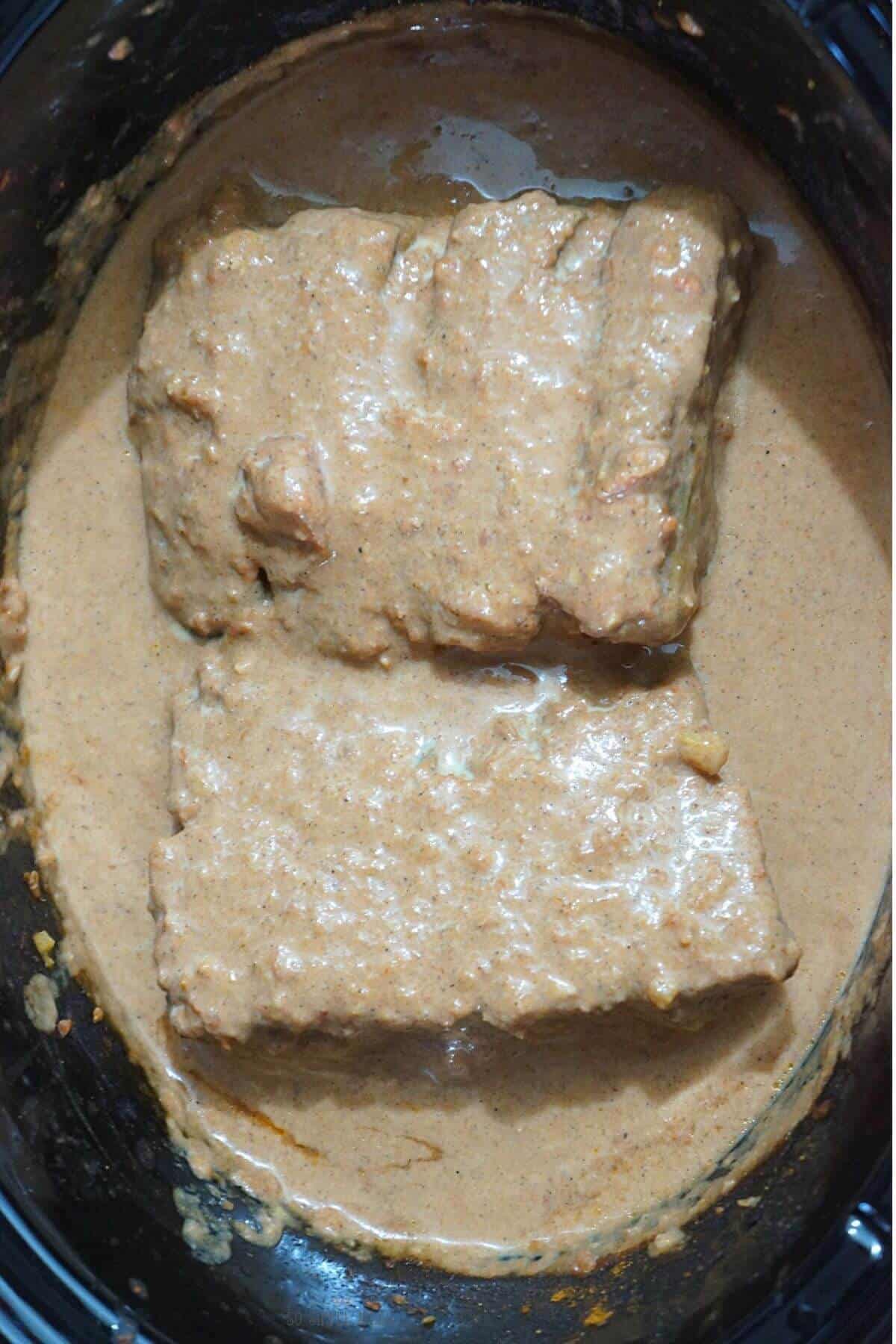
Add lentils or legumes to the curry
Some Indian curries use a small amount of lentils to bulk up the sauce because they will automatically absorb extra liquid when cooked. This can alter the flavor somewhat, but it also boosts nutritional content.
Below are the steps for how to thicken your curry sauce by adding lentils or legumes:
- Add two tablespoons of cooked red lentils to the pot of curry dish to help thicken it.
- Alternatively, puree beans, chickpeas, or other legumes into a smooth paste and stir them into the dish.
Blend some of the ingredients
If you’re making a vegetable curry, you can use some of the ingredients in the dish itself to produce a thick paste.
Here’s how to use vegetable ingredients:
- Remove some ingredients like potatoes, squash, carrots, legumes from the pot.
- Blend the ingredients separately in a food processor.
- Add back the puree into the sauce.
Best way to thicken curry
How to thicken curry sauce? You can use a number of methods such as simmering it, making a roux, or adding flour, cornstarch, xanthan gum, or yogurt.
Mixing curry sauce with ground nuts, tomato puree, lentils, or legumes, as well as blending some ingredients can also thicken a curry. Simmering a curry is the best method because it is the simplest and easiest.
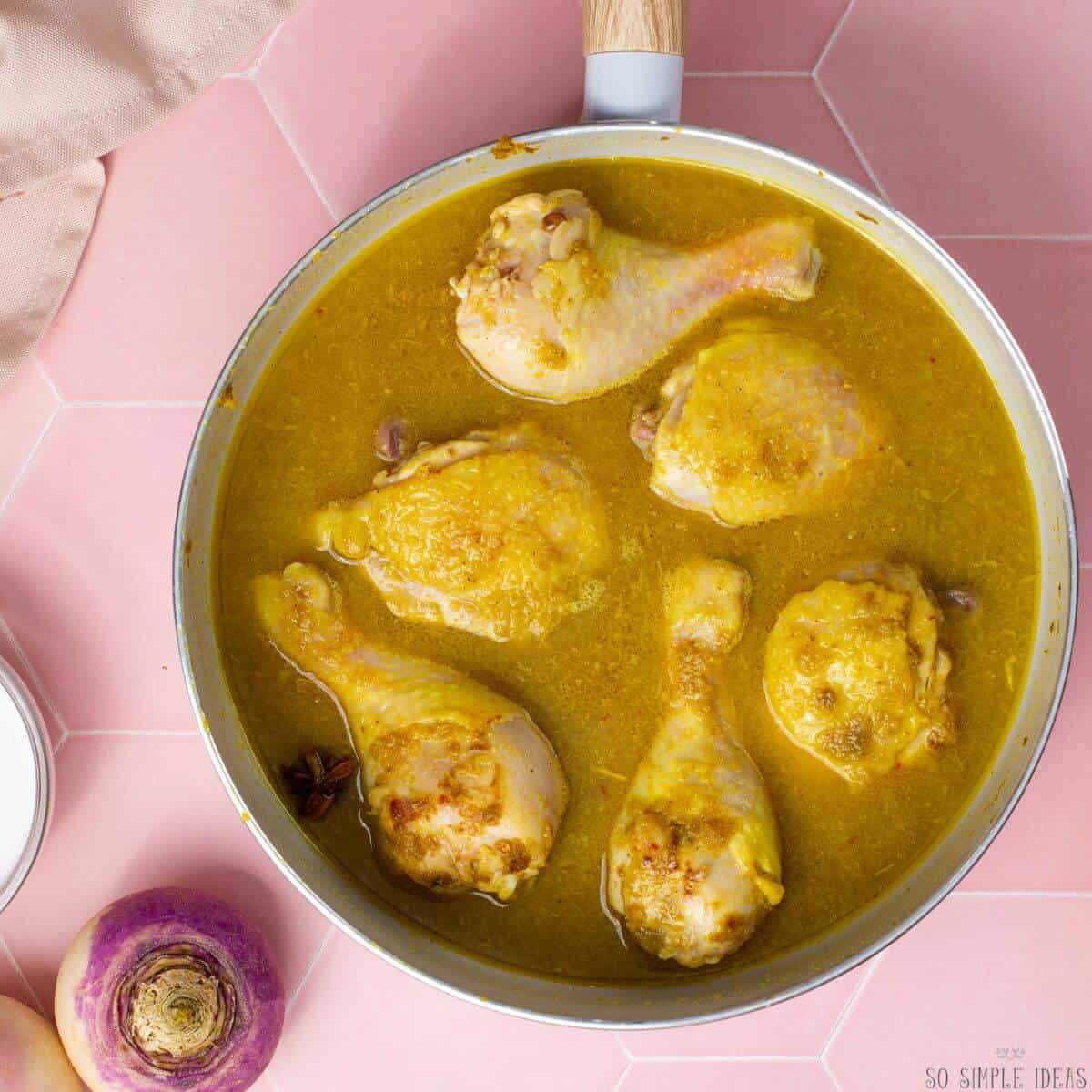
FAQs on how to thicken a curry
If you don’t see your question answered below, don’t be afraid to let us know in the comments!
When you undercook curry, add too much liquid to it, or simmer it with the lid on, your curry will be too watery. Using frozen ingredients instead of fresh is another common culprit.
Simmering the curry sauce for 15 to 30 minutes will reduce its liquid content.
If you don’t want to use flour to thicken your curry, you can simmer it longer. You can also use xanthan gum or yogurt. Furthermore, you can add ground nuts, tomato puree, or lentils, or blend some ingredients to make a thickening paste.
You can use the sauce in many Indian style dishes like aloo gobi which is a potato cauliflower curry.
Other Articles You May Be Interested In
If you enjoyed this post, you might also like these related posts on cooking:

